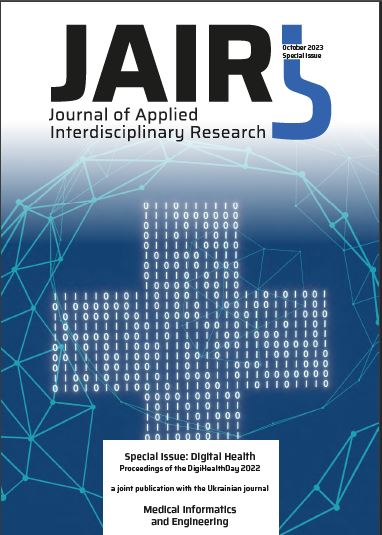The Future of Medicine and the Logic of Data Management Data Discrimination Problems
Main Article Content
Keywords
Big data , medical data discrimination, data analytics, big data, eHealth, electronic medical records, health care, medical information management, metadata, metatechnologies, infonomics, internet of things
Abstract
Considered problems of medical data management. It is emphasized that this process has the greatest potential to ensure accurate and cost-effective patient care, as well as knowledge transfer during medical education. Analyzing the main areas of professional application of data: integration of big data, working with data of various types (from batch to stream) and their transformation for further use, we note that all the listed areas do not have a clear interpretation and recommendations for their use.
The purpose of the study was to substantiate the strategy of a safe and effective medical data management system and the logic of creating completely open data systems. This strategy will allow streamlining the data flows of instrumental and laboratory studies and ensure the delivery of their big data directly to medical institutions or medical research centers.
Conclusions: 1. There is a need for a comprehensive real-time medical data management system that will allow physicians, patients, and external users to enter their medical and lifestyle data into the system. 2. The inclusion of big data analytics will help to better predict or diagnose diseases, and accordingly help in the development of an effective plan for the prevention of complications and treatment of the disease. 3. Scaling communication with each patient in real time is possible only with the help of artificial intelligence. Manual intervention simply cannot serve thousands of users at the same time, each in their own way, addressing each individual directly. This conclusion should be especially emphasized when creating a perfect model of family medicine organization. 4. Transferring information is at the heart of developmental biology, and thus it is imperative that we can form a logical and structured approach to the healthcare language. If, as it appears, information theory has much offer to biology, further advances will depend on its integration. Given that these fields share many terms with developmental biology, effective collaboration may necessitate redefining the meaning attached to signaling, communication and information, in the context of the biology and medicine. Biosemiotics is inherently concerned with the language and rules of signals and codes in biological systems. It combines many ideas from diverse areas including systems theory, information theory and linguistics and may offer us a new perspective on the classification and meaning of biological and medical signaling.
References
2. Nong P, Williamson A, Anthony D, Platt J, Kardia S. Discrimination, trust, and withholding information from providers: Implications for
missing data and inequity. SSM – Population Health. 2022;18:101092. doi: 10.1016/j.ssmph.2022.101092
3. Favaretto M, De Clercq E, Elger BS. Big Data and discrimination: Perils, promises and solutions. A systematic review. Journal of Big
Data. 2019;6(1). doi: 10.1186/s40537-019-0177-4
4. Rahm E, Hong HD. Data Cleaning: Problems and Current Approaches. IEEE Bulletin of the Technical Committee on Data Engineering.
2000;(23):3–13.
5. Zarsky T. The trouble with algorithmic decisions. Science, Technology, & Human Values. 2015;41(1):118–132. doi:
10.1177/0162243915605575
6. Jordan JD, Landau EM, Iyengar R. Signaling networks: the origins of cellular multitasking. Cell. 2000;103(2):193–200. doi: 10.1016/
s0092-8674(00)00112-4
7. Eungdamrong NJ. Modeling Cell Signaling Networks. Biology of the Cell. 2004. doi: 10.1016/s0248-4900(04)00077–2
8. Capra F. The Hidden Connections: A Science for Sustainable Living. London: HarperCollins; 2002.
9. Xu M, Wu F, Leung H. A biologically motivated signal transmission approach based on stochastic delay differential equation.
Chaos: An Interdisciplinary Journal of Nonlinear Science. 2009;19(3):033135. doi: 10.1063/1.3227642
10. George BJ, Brown AW, Allison DB. Errors in statistical analysis and questionable randomization lead to unreliable conclusions.
Journal of Paramedic Science. 2015;6:153–154.
11. Platt CC, Nicholls C, Brookes C, Wood I. Classification of cell signalling in tissue development. Cell Communication & Adhesion. 2011;18(1-2):9–17. doi: 10.3109/15419061.2011.586755


